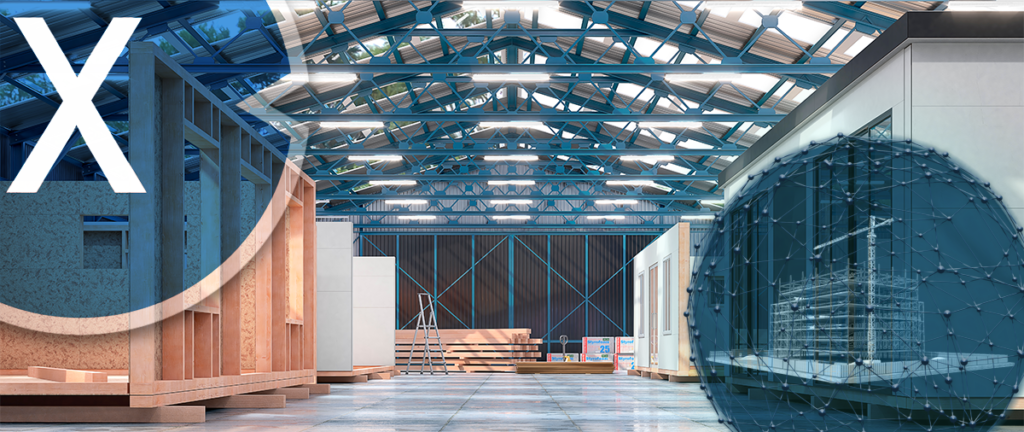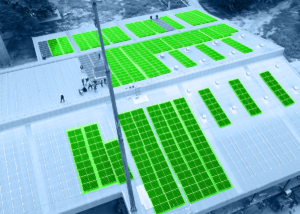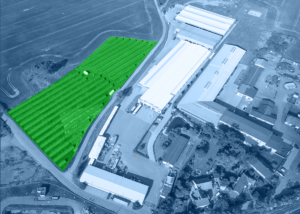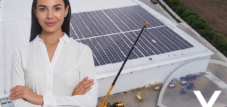Consulting & planning: Top 10 manufacturers and construction companies of heat pumps with installation, construction and assembly in Berlin and Brandenburg, among others
Language selection 📢
Published on: July 12, 2023 / update from: July 12, 2023 - Author: Konrad Wolfenstein
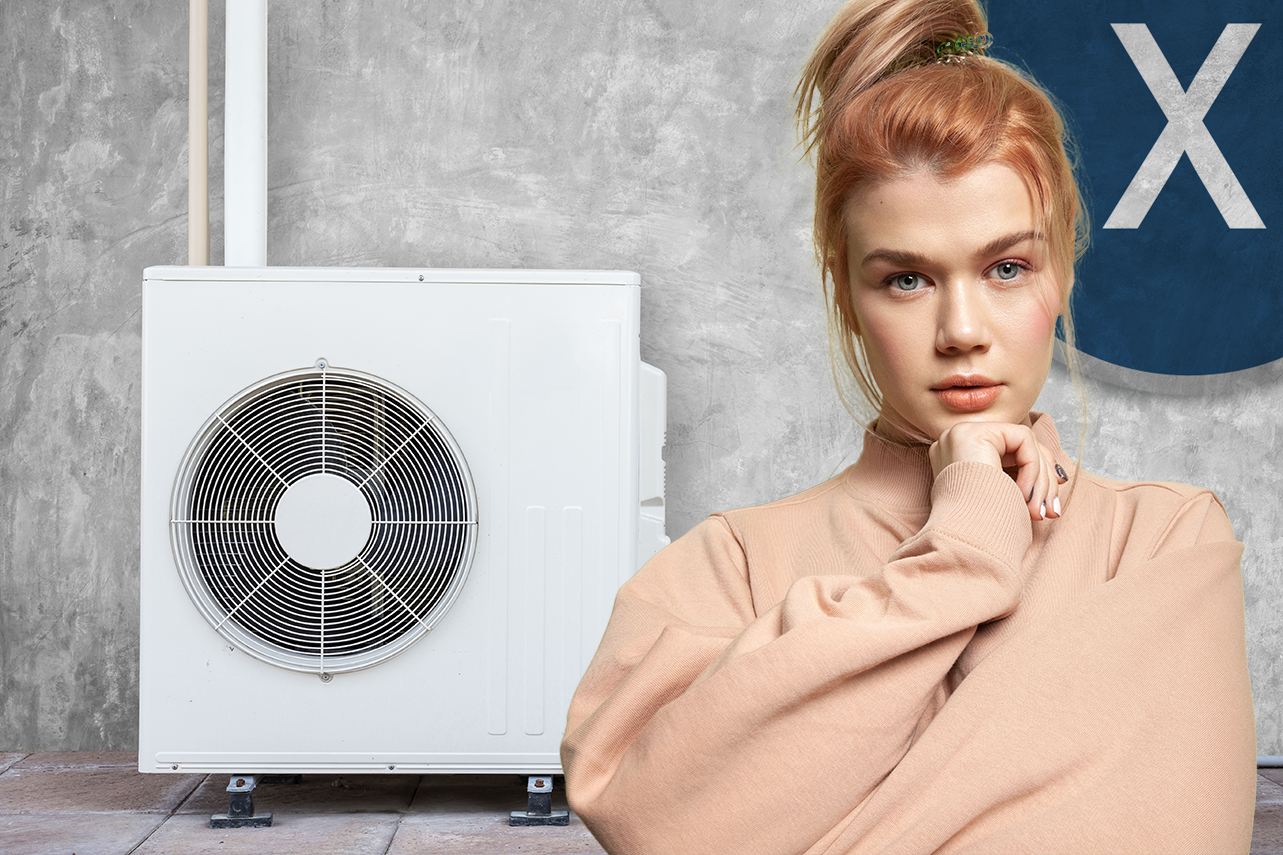
Consulting & planning: Heat pumps with installation, construction and assembly – Image: Xpert.Digital
Steps for optimal heat pump installation: advice, planning and installation
A heat pump is a device that transfers thermal energy from a source to a destination. Heat pumps use renewable energy by extracting heat from the environment - air, water or geothermal heat - and using it for heating and hot water preparation. Because they use less energy than conventional heating systems, they help reduce carbon dioxide emissions and protect the environment.
Advice and planning
Before installing a heat pump, thorough advice and planning is necessary. This includes a detailed analysis of the building and the existing heating system. The thermal output of the building is calculated to determine the correct size and type of heat pump. Factors such as insulation, window area and quality, the age and structure of the building, and the use of rooms must be taken into account.
Another important aspect of advice and planning is determining the most suitable heat source. A distinction is made here between air, water and geothermal heat. Air source heat pumps are usually the easiest to install as they do not require any excavation work, however they are often less efficient in operation than water or ground source heat pumps.
Installation, construction and assembly
Installing a heat pump is a complex process that should be carried out by professionals. Various steps are taken during installation:
1. Providing the heat source
This can be the installation of a geothermal probe or collector for a geothermal heat pump, or the installation of an air source heat pump that extracts heat from the surrounding air.
2. Installing the heat pump
The heat pump is installed in the house or in a technical room and connected to the heat source. It can also be connected to an existing heating system if a bivalent operating mode (heat pump plus another heating system) has been selected.
3. Connection to the heating system
The heat pump is connected to the existing heating system, either as a replacement for the existing heating system or as a supplement to it.
4. Installation of the control and regulation technology
The heat pump is connected to a control and regulation system that controls and optimizes the operation of the heat pump.
5. Commissioning and instruction
After installation, the heat pump is put into operation and users are instructed in its operation.
Installing a heat pump requires a high level of technical knowledge and experience. It is therefore advisable to have this work carried out by qualified professionals. A correctly installed and well-maintained heat pump system can operate reliably for many years while saving significant energy costs.
Final thoughts
Heat pumps are an excellent way to improve a building's energy efficiency while reducing its environmental impact. With careful planning and professional installation, heat pumps can provide a reliable and cost-effective heating solution. However, it is important that expert advice and planning is carried out to ensure the system is correctly sized and functions optimally.
📣 Energy-related renovation and new construction, consulting, planning and implementation for industry, retail and municipalities
Our experienced team will support you in optimizing your buildings to reduce energy consumption and promote sustainable energy use with photovoltaics. We analyze your individual needs and create tailor-made concepts that make sense both economically and ecologically. Regardless of whether it is about the energy-efficient renovation of existing buildings or the construction of new energy-efficient structures, we are at your side. Industrial facilities, retail buildings and municipal facilities can reduce their energy costs and reduce environmental impact while improving the comfort and efficiency of their buildings through our tailored solutions.
👨🏻 👩🏻 👴🏻 👵🏻 Energy-saving renovation and new construction, advice, planning and implementation for private households
We offer comprehensive support for private households in the energy-efficient renovation and construction of new buildings with photovoltaics. Our experienced team is at your side to help you advise, plan and implement your sustainable energy solutions. We analyze your energy consumption, identify savings potential and develop tailor-made concepts to improve your energy efficiency. From improving building insulation to installing energy-efficient windows and doors to installing photovoltaic and solar systems - we accompany you step by step to make your home more energy efficient and environmentally friendly. Trust in our expertise and benefit from the numerous advantages that energy renovation and the use of renewable energies offer you. Together we will create a sustainable future for your home.
Top ten manufacturers and companies for heat pumps
Daikin
A Japanese manufacturer known for its inverter technology and wide range of air and ground heat pumps. They are leaders in the use of environmentally friendly refrigerants and are characterized by high efficiency and quality.
Viessmann
A German company with over 100 years of experience in heating technology. Viessmann offers a wide range of heat pumps, including air-water, brine-water and water-water pumps. They have set themselves the goal of being CO2 neutral by 2050.
Bosch
Bosch is a world-famous German company that also operates in the field of heating and cooling systems. Bosch offers high-quality heat pumps that are suitable for both residential and commercial properties. Their products are characterized by efficiency, durability and smart control options.
Mitsubishi Electric
Another leading manufacturer from Japan that offers heat pumps with high efficiency and quality. You are known for your “Zubadan” technology, which ensures constant heating output even at very low outside temperatures.
Stiebel Eltron
A German company with over 90 years of experience. They offer a wide range of heat pumps and are known for their innovative and energy-efficient technology.
Vaillant
Vaillant is a leading company in the heating, ventilation and air conditioning industry based in Germany. They offer a range of efficient and reliable heat pumps designed for different requirements and areas of use.
NIBE
A Swedish company offering a wide range of energy efficient heat pumps. They place a high value on sustainability and strive to create solutions that have a minimal impact on the environment.
Danfoss
A Danish company offering a wide range of heating and cooling solutions. Danfoss is known for its reliable and energy-efficient heat pumps, which are characterized by quality and durability.
Panasonic
Another Japanese electronics giant also active in the heating and cooling solutions sector. Panasonic offers heat pumps that are characterized by their high energy efficiency and smart control options.
Carrier
An American company considered a pioneer in air conditioning. Carrier offers a wide range of heat pumps that are characterized by high quality and performance, efficient operation and innovative features.
The challenge of holistic energy technology: Why companies have to combine solar engineers and heat pump installers
There are several reasons why there are many solar and heat pump installers, but relatively few companies that can offer both services simultaneously and holistically.
1. Specialization
Installing solar systems and heat pumps requires different expertise and skills. Solar installers specialize in installing and operating solar systems to generate electricity, while heat pump installers specialize in installing heating and cooling systems. Each area requires a deep understanding of technologies, specific certifications and experience. Companies often have difficulty finding experts who are equally versed in both solar technology and heat pump technology.
2. Complexity of projects
Installing solar systems and heat pumps requires complex planning, calculations and design work. Solar engineers must determine the best position for the solar panels to ensure maximum sunlight exposure. Heat pump installers, on the other hand, must analyze a building's heating and cooling needs and select the appropriate heat pump solution. The combination of both technologies requires a comprehensive analysis of a building's energy needs and an optimal integration of both systems. This represents an additional challenge that not all companies can overcome.
3. Resources and investments
Installing solar systems and heat pumps requires specialized tools, equipment, and materials. Companies that specialize in just one of the areas can target their resources and investments accordingly. Those wanting to offer both services will need to invest in a wider range of resources, which incurs additional costs. This can place a financial burden on smaller businesses and reduce the desire to offer both services.
4. Market need and demand
The market for solar systems and heat pumps has increased significantly in recent years as people become increasingly interested in renewable energy and energy efficient solutions. There is a high demand for qualified solar engineers and heat pump installers who can offer specialist services. This has led to an increase in the number of companies focusing on these areas. At the same time, the demand for companies that can combine both services is lower because there are fewer customers who need both solar systems and heat pumps.
5. Collaborations and partnerships
Some companies choose to bridge the gap by entering into collaborations or partnerships with other companies that specialize in the other field. In this way, they can offer their customers a holistic solution without having to have all the necessary resources and knowledge themselves. Such collaborations can make it possible to offer customers a seamless integration of solar systems and heat pumps, while each company contributes its specific expertise.
➡️ The large number of solar engineers and heat pump installers compared to the small number of companies that can offer both simultaneously and holistically can be attributed to the specialization, the complexity of the projects, the resources and investments, the market needs and demand as well as to cooperation and partnerships is. It is important to note that the market is constantly evolving and in the future there may be more companies that can successfully combine both services.
Plan your solar system for the most common applications conveniently online with our solar system planner!
With our user-friendly solar system planner you can plan your individual solar system online. Whether you need a solar system for your home, your business or for agricultural purposes, our planner offers you the opportunity to take your specific requirements into account and develop a tailor-made solution.
The planning process is simple and intuitive. You simply enter relevant information. Our planner takes this information into account and creates a tailor-made solar system that meets your needs. You can try out different options and configurations to find the optimal solar system for your application.
Additionally, you can save your plan to review later or share with others. Our customer service team is also available to answer your questions and provide support to ensure your solar system is optimally planned.
Use our solar system planner to plan your individual solar system for the most common applications and advance the transition to clean energy. Start now and take an important step towards sustainability and energy independence!

The solar system planner for the most common applications: Plan the solar system online here - Image: Xpert.Digital
More about it here:
Infrared radiation for comfortable warmth: The advantages of a carbon fiber heater compared to an air-to-air heat pump
If a ground source heat pump is not suitable for certain reasons, a carbon fiber heater, also known as carbon heat (infrared heater), can be an interesting alternative to the traditional air-to-air heat pump. Here are some important and interesting details that shed light on this option:
How the carbon fiber heater works
A carbon fiber heater is based on the use of electrically heated carbon fiber panels that serve as a heat source. The electric current heats the carbon fiber and then emits long-wave infrared radiation that is absorbed by surrounding surfaces and objects. These in turn release the heat into the room and thus create a pleasant room temperature.
Efficiency and energy saving
Compared to an air-to-air heat pump, the carbon fiber heater has the advantage that no heat has to be obtained from the ambient air. This means it is independent of the outside temperatures and works consistently efficiently. In addition, there is no need for an outdoor unit and the associated noise. This makes carbon fiber heating an attractive option for rooms where high energy efficiency and a pleasant indoor climate are desired.
Comfortable room climate
The carbon fiber heater emits heat through infrared radiation, which is found to be particularly pleasant. Compared to conventional heating systems that heat the air, carbon fiber heating ensures an even and comfortable distribution of heat throughout the room. In addition, certain models can be individually controlled so that targeted heat zones can be created.
Installation and space requirements
Installing a carbon fiber heater requires careful planning as the panels need to be strategically placed on the walls or ceilings of the room. The space requirement is smaller compared to an air-to-air heat pump because no outdoor unit is required. However, it is important to consider panel positioning and room size to ensure even heat distribution.
Costs and operating expenses
The initial cost of a carbon fiber heater can be higher than that of an air-to-air heat pump. Still, long-term running costs can be lower because the carbon fiber heater operates efficiently and contains no moving parts or compressors that require maintenance or repair. In addition, the operating costs depend on the electrical energy required to heat the carbon fiber panels.
➡️ It is important to note that the choice between a carbon fiber heater and an air-to-air heat pump depends on various factors, such as the specific requirements of the room, individual preferences and local conditions. Expert advice and a careful analysis of specific needs are crucial to determine the best heating option for each individual case.
Industrial heating solutions in comparison: What advantages does carbon fiber heating offer over heat pumps?
The decision as to whether carbon fiber heating (infrared heating) is a better alternative to heat pumps in industrial areas, especially in building complexes and industrial buildings, depends on various factors. Here are important and interesting details to consider when making this decision:
1. Energy requirements and efficiency
The energy requirements of industrial buildings can be significant due to their size and use. Heat pumps are known for their high energy efficiency as they extract heat from the surrounding air, the ground or the water. This makes them particularly beneficial in areas with a temperate climate. However, carbon fiber heaters can be a good alternative if the energy requirement is not too high or if specific areas with targeted heating needs are to be equipped.
2. Flexibility and zoning
Industrial buildings often have different zones with different heating requirements. Infrared heaters offer the advantage of flexible zoning. Through the targeted placement of carbon fiber panels, heat can be generated where it is needed. This enables efficient use of heating energy and individual temperature control for different areas of the industrial building.
3. Maintenance and operating costs
Heat pumps require regular maintenance and inspection, especially when used on a larger scale in industrial buildings. In comparison, the carbon fiber heater has fewer moving parts and is largely maintenance-free. This can result in lower operating costs and higher availability, especially in large industrial facilities where maintenance can be a complex and time-consuming task.
4. Reaction speed and room climate
Infrared heaters have the advantage of a quick response time. As soon as the carbon fiber panels are activated, they emit pleasant heat within just a few minutes. This is particularly beneficial in industrial buildings where a rapid rise in temperature may be required when needed, such as work areas or warehouses. In addition, the infrared radiation from the carbon fiber heater can contribute to an even and pleasant room temperature.
5. Investment costs and environmental aspects
Heat pumps often require extensive installation and infrastructure, especially in larger industrial facilities. This can lead to higher investment costs. In comparison, carbon fiber heaters are typically easier to install and require less structural work. They are also emission-free and do not produce any harmful exhaust gases, which can be particularly advantageous in industrial buildings with high environmental regulations.
➡️ It is important to note that the decision between a carbon fiber heater and a heat pump in the industrial sector depends on the specific requirements of the building, energy requirements, zoning, operating costs, response speed, investment costs and environmental aspects. A careful analysis and individual evaluation are necessary to determine the best heating solution for the industrial sector.
Efficient heat in an industrial environment: How carbon fiber heating meets the requirements of building complexes and industrial buildings better than a heat pump
Specific applications
The decision between a carbon fiber heater and a heat pump in the industrial sector also depends on the specific applications and processes that take place in the building complexes and industrial buildings. In some cases, a heat pump may be a better choice due to its ability to cool and heat simultaneously. In other cases where targeted and zone-specific heat delivery is required, a carbon fiber heater may be the preferred option.
Integration with other systems
Industrial facilities often have complex systems such as ventilation systems, air conditioning systems and process controls. Integrating a carbon fiber heater or heat pump into these existing systems can play a role in the decision. A carbon fiber heater can usually be easily integrated into existing electrical systems, while a heat pump may require additional customization or interfaces.
Scalability and expansion options
In industrial facilities there is often the possibility of future expansion or changes to the building structures. The flexibility and scalability of the heating solution are therefore important aspects. A carbon fiber heater offers some flexibility here as the panel placement and number can be adjusted depending on your needs. With heat pumps, however, scalability may be limited by the limited capacity of the system and the availability of suitable heat sources.
Environmental aspects and sustainability
Sustainability is also playing an increasingly important role when making decisions in the industrial sector. Heat pumps are considered an environmentally friendly solution because they use renewable heat sources and work efficiently. However, carbon fiber heaters are also environmentally friendly as they are electrically powered and do not produce harmful emissions. They can also be operated with renewable energy sources, which further reduces their ecological footprint.
Operational requirements and user preferences
Industrial buildings often have specific operational requirements, such as high reliability, ease of operation and fast response time. User preferences also play a role, as they want a pleasant indoor climate and a comfortable working environment. A comprehensive assessment of operational needs and user preferences is therefore important to determine the best alternative.
➡️ It is important to note that the choice between a carbon fiber heater and a heat pump in the industrial sector depends on an individual analysis, taking into account factors such as energy requirements, flexibility, maintenance costs, speed of response, specific applications, integration with other systems, scalability, environmental aspects, operational requirements and user preferences are taken into account. A careful evaluation of these aspects will help identify the better alternative for specific industry needs.
- Warehouses, production halls and industrial halls with their own power source from a photovoltaic roof system - Image: NavinTar|Shutterstock.com
- Industrial plant with its own power source from an outdoor photovoltaic system - Image: Peteri|Shutterstock.com
- Plan solar systems with photovoltaic solutions for freight forwarding and contract logistics
- B2B solar systems and photovoltaic solutions & advice
- Plan photovoltaics for warehouses, commercial halls and industrial halls
- Industrial plant: Plan a photovoltaic open-air system or open-space system
- Plan solar systems with photovoltaic solutions for freight forwarding and contract logistics
- B2B solar systems and photovoltaic solutions & advice
Expert advice on energy-efficient renovation and new construction with Xpert.Plus
I would be happy to serve as your personal advisor.
You can contact me by filling out the contact form below or simply call me on +49 89 89 674 804 (Munich) .
I'm looking forward to our joint project.
Xpert.Digital – Konrad Wolfenstein
Xpert.Digital is a hub for industry with a focus on digitalization, mechanical engineering, logistics/intralogistics and photovoltaics.
With our 360° business development solution, we support well-known companies from new business to after sales.
Market intelligence, smarketing, marketing automation, content development, PR, mail campaigns, personalized social media and lead nurturing are part of our digital tools.
You can find out more at: www.xpert.digital – www.xpert.solar – www.xpert.plus



